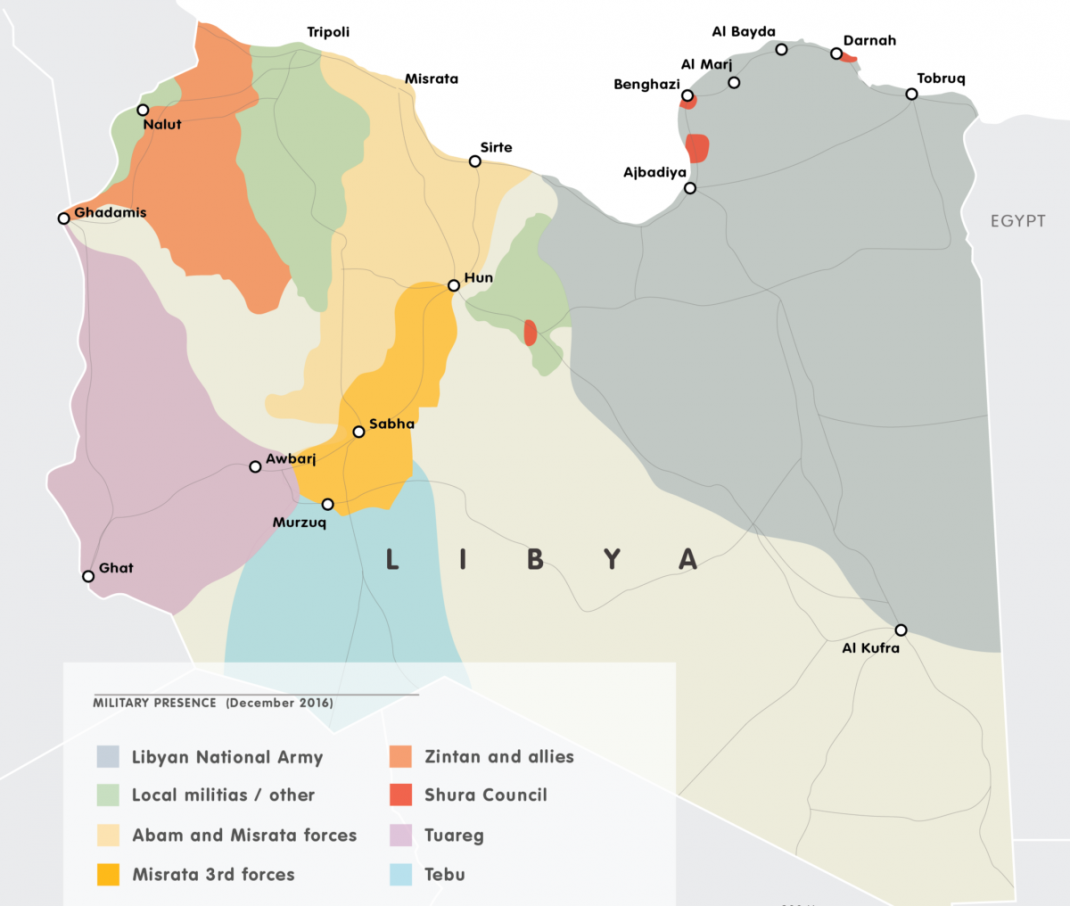By Wolfram Lacher
The 17th February Revolution has fundamentally reshaped Libya’s political landscape.
Political Forces in the New Libya
Local non-state actors have been among the leading drivers of change: local councils, tribal forums, revolutionary brigades. The Islamist spectrum has also grown in strength, and its forces have organised on a national basis. The elitist political leadership that brought together members of the exiled opposition and high-ranking
defectors to form the National Transitional Council (NTC) in February/March 2011 in Benghazi was overrun by these developments. The NTC quickly gained international recognition and support, but failed to build close relations with the local councils and
brigades leading the revolutionary struggle. This generated great tensions between the revolutionary base and the political leadership. After the civil war ended, many figures who had been involved with the former regime as senior officials, diplomats or technocrats came under increasing pressure, even though their early defections had contributed to the success of the revolution.
Many members of the NTC and the governments of Mahmoud Jibril (March to November 2011) and Abdel Rahim al-Kib (November 2011 to November 2012) were forced out of the political arena by actors with a local power base, whether through public pressure or as a result of elections. 4
Camps and Interests in Congress and Government
An analysis of the composition of the National Congress reveals a picture of fragmentation. Apart from the Muslim Brotherhood and the Salafis, there are no ideologically defined camps; individual interests and shifting alliances characterise the scene.
Libya’s political parties were only able to develop after the fall of the regime. The electoral law of January 2012 took account of the weakness of national political forces with a voting system in which three-fifths of the two hundred members of the GNC were elected as independent constituency representatives and two-fifths via party lists.
Given that party lists were not required to stand candidates in more than one constituency, many of these were also local interest groups. Fourteen of the eighty members elected via lists fall into this category. Even Prime Minister Zeidan’s list, which stood candidates in numerous constituencies, succeeded in winning seats only in Zeidan’s home constituency of Jufra. 5
On the other hand, members of several parties were also elected as independents.
Balance of forces in the GNC
Apart from a number of prominent individuals, and figures with a clear Islamist profile, most of the independents represent the interests of individual cities, tribes or families. Almost two-thirds of independents won their seats with less than 20 percent of the votes, and more than half of those did not even gain 10 percent. Outside the big cities of the north-west, tribal loyalties were often the deciding factor.
In Benghazi, for example, six of the nine independents, each of them associated with a particular tribe or party, were elected on less than 2 percent of the votes. 6
Each of the four independents from Sabha represents a different local tribal constituency; the situation is similar in Murzuq and Ubari. In Kufra and Bani Walid, which each elected two members with respectable shares of the vote, agreements between tribal leaders to back particular candidates were ratified via the ballot box. In Ruhaybat, the candidate of the Arab population beat the Berber candidate with 51 percent of the vote. 7
In the big cities, many seats were won by members of bourgeois and aristocratic families that already played a leading role in politics and business before Gaddafi’s military coup of 1969. These include Abderrahman Swehli and Ali Abdallah al-Dharrat from Misrata, Saleh Jaouda and Ahmad Langhi from Benghazi and Abdeljalil Saif al-Nasr from Sabha.
At least to some extent, they should be regarded as representing political and business networks led by their respective families.
…
To be continued
***
Wolfram Lacher is an Associate in SWP’s Middle East and Africa Division
NOTES:
4- On the sociological composition of the revolutionary camp during the civil war, see Wolfram Lacher, “Families, Tribes and Cities in the Libyan Revolution”, Middle East Policy 18, no. 4 (winter 2011): 140–54.
5- Zeidan’s National Party for Development and Welfare (Hizb al-Watan lil-Tanmiya wal-Rafah) won one seat via the party list. Zeidan himself was elected as an independent member for Jufra.
6- The electoral law placed no limit on the number of candidates and lists. Each constituency was assigned a particular number of seats for independents. The candidates with the most votes were elected to the National Congress.
7- Discussions with activists and officials from Kufra and Bani Walid, as well as Professors Zahi Mogherbi and Fathi Bouzkhar, Benghazi, Bani Walid and Tripoli; November 2012.
________________




